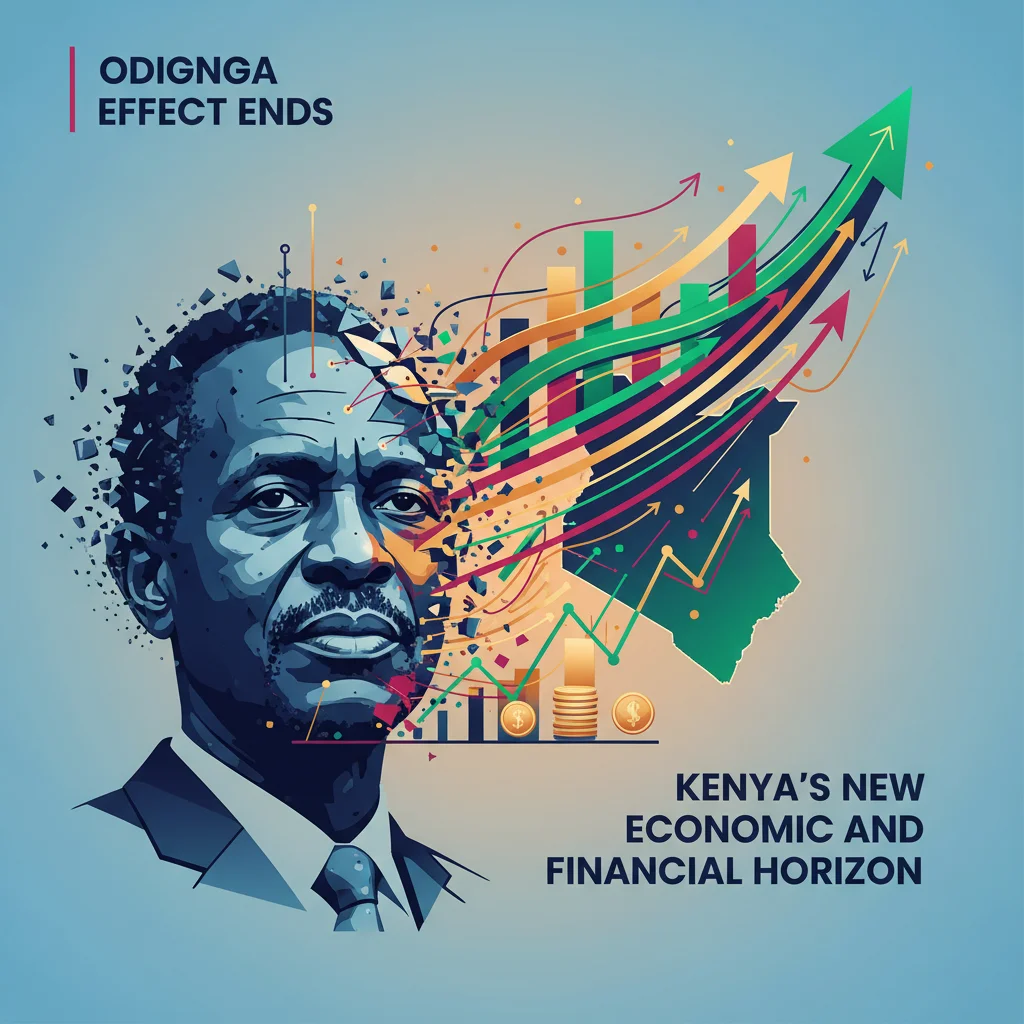
The Odinga Effect Ends: Charting Kenya’s New Economic and Financial Horizon
In the world of emerging markets, few figures have cast as long a shadow over a nation’s political and economic landscape as Raila Odinga. The announcement of his passing at the age of 80 marks the end of an era for Kenya—a complex period of democratic struggle, political turbulence, and profound economic transformation. For investors, business leaders, and financial analysts, Odinga was more than a politician; he was a political barometer whose actions directly influenced market sentiment, currency fluctuations, and the overall climate for investing in East Africa’s largest economy.
Odinga’s journey from a fiery opposition leader, imprisoned for his pro-democracy activism, to a central figure in the country’s power-sharing governments is a story of persistence. He was a principal architect of Kenya’s shift from a one-party state to a multi-party democracy in the 1990s. This fundamental change was not just a political victory; it was the bedrock upon which Kenya’s modern, liberalized economy was built. By dismantling the old guard’s monopolistic control, the move towards democracy opened the door for greater competition, foreign investment, and the nascent beginnings of the vibrant financial technology scene we see today.
A Legacy of Democratic Ideals and Economic Disruption
Raila Odinga’s political career was defined by a powerful paradox. On one hand, he was a tireless advocate for democratic institutions, constitutional reform, and human rights. His most significant achievement was arguably his role in championing the 2010 constitution, a progressive document that introduced a presidential system with checks and balances and, crucially, devolved power and resources to 47 newly created counties. This policy of devolution has been a game-changer for regional economics, aiming to spread development beyond Nairobi and create new hubs for commerce and investment.
On the other hand, Odinga’s five unsuccessful presidential bids often culminated in periods of intense political instability that sent shockwaves through the nation’s financial markets. His steadfast refusal to accept what he deemed to be stolen elections led to mass protests and political crises that tested Kenya’s resilience. The most severe of these was the post-election violence of 2007-2008, a period that saw the Kenyan stock market plummet and brought the country’s economy to a standstill. For those involved in trading and investment, the “Odinga effect” became a predictable cycle of pre-election anxiety and post-election volatility.
A Billion Deal, A Sudden Downgrade: Did Anglo American Miss a Red Flag with Teck?
To understand the direct correlation between Odinga’s political maneuvers and Kenya’s economic performance, consider the following key events:
| Political Event & Year | Description | Immediate Economic/Financial Impact |
|---|---|---|
| 2007 Disputed Election | Odinga lost a tightly contested election, leading to widespread protests and ethnic violence. | The Nairobi Stock Exchange (now NSE) shed over 28% of its value in weeks. GDP growth slowed dramatically from 7% to under 2% (source). |
| 2013 Supreme Court Challenge | Odinga challenged Uhuru Kenyatta’s victory in court. Though peaceful, it created uncertainty. | Temporary halt in investment decisions and a dip in market activity. The peaceful resolution, however, boosted investor confidence long-term. |
| 2017 Election Annulment & Rerun | Odinga successfully petitioned the Supreme Court to annul the presidential election, a first in Africa. He boycotted the rerun. | Prolonged political uncertainty led to a credit rating downgrade warning from Moody’s. The Kenyan Shilling faced significant pressure. |
| 2018 “The Handshake” | Odinga and President Kenyatta publicly reconciled, ending a period of intense political hostility. | An immediate rally in the stock market and a stabilization of the shilling. It ushered in a period of political calm that was highly favorable for finance and business. |
The Shift to Pragmatism: Political Horse-Trading and Market Stability
In his later years, the firebrand revolutionary increasingly morphed into a pragmatic political insider. The most telling example was his 2018 “handshake” with his longtime rival, President Uhuru Kenyatta. This alliance, while alienating some of his diehard supporters, was a masterstroke of political calculation that brought an immediate sense of calm to the nation. For the business community and international investors, the handshake was a welcome relief. It stabilized the political environment, allowing the government to focus on its “Big Four Agenda” (food security, affordable housing, manufacturing, and affordable healthcare) and creating a more conducive atmosphere for the banking sector and foreign direct investment.
This move cemented Odinga’s reputation as a figure who, despite his populist rhetoric, understood the deep connection between political stability and economic prosperity. He came to represent a culture of political horse-trading that, while often criticized for lacking ideological purity, became a necessary mechanism for maintaining peace and, by extension, a functioning market. As one western diplomat noted, Odinga “helped push the boundaries of democracy and establish a new constitution, but he also came to represent the transactional politics he once fought against” (source).
Kenya’s Financial Future in a Post-Odinga World
What does the end of the Odinga era mean for Kenya’s future, particularly in high-growth sectors like fintech and renewable energy? His enduring legacy of devolution has already laid the groundwork for decentralized economic growth. As county governments mature, they present new opportunities for localized investment in infrastructure, agriculture, and services, moving beyond the traditional reliance on Nairobi.
Moreover, the political stability that followed his final rapprochement with the government has allowed Kenya to solidify its status as a hub for financial technology. The M-Pesa revolution was just the beginning; today, Nairobi is a hotbed for startups exploring everything from digital lending to asset management and even applications of blockchain for supply chain transparency. A political future less defined by a single, powerful opposition figure could reduce the perceived risk for venture capital and private equity funds looking to tap into this innovative ecosystem.
However, challenges remain. The culture of transactional politics that Odinga eventually embraced could lead to a more fragmented and unpredictable political landscape without his commanding presence to anchor the opposition. The focus for investors and business leaders will now shift to the institutions he helped build. The strength and independence of the judiciary, the electoral commission, and the devolved county governments will be more critical than ever in ensuring a stable and predictable environment for investing and economic growth.
Decoding SoftBank's .4B Robotics Play: More Than a Deal, It's a Declaration
In conclusion, Raila Odinga’s legacy is a tapestry woven with threads of democratic idealism and pragmatic, often disruptive, political maneuvering. He was a force of nature who simultaneously expanded Kenya’s democratic space while also being a primary source of its political volatility. His passing closes a major chapter in the nation’s history. For the financial world, it signals a fundamental shift in the risk calculus for one of Africa’s most important markets. The “Odinga effect” on the stock market is over, but the resilience of the institutions he fought for will now face their ultimate test. The future of Kenya’s economy will depend on whether it can transition from an era defined by political titans to one defined by institutional strength.


